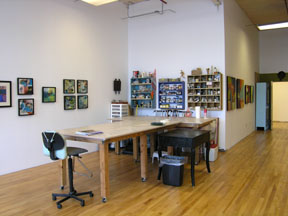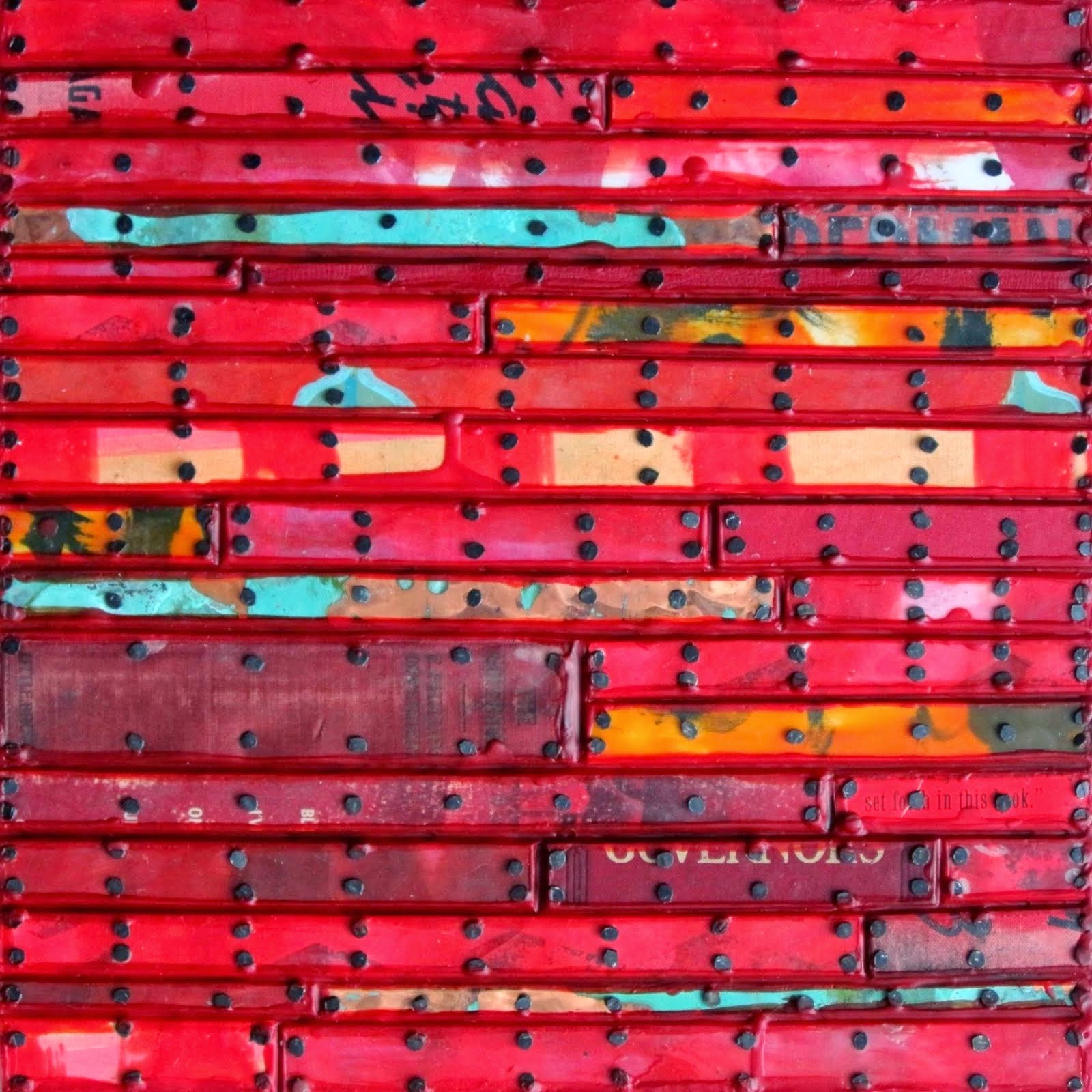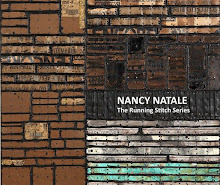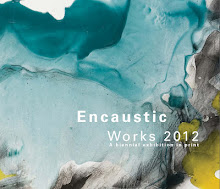 |
| In the window on Newbury Street, "Singing The Blues" |
A Look Around the Gallery
For one reason or another, I was unable to take installation photos of the show and my good friend Lynette Haggard came to my rescue. Nearly all of the photos here were shot by Lynette, and I appreciate her work on my behalf. (Note: Click on each photo to enlarge. Also note that if you want to see any of this work more closely, you can take a look at my website or at the Arden Gallery website).
 |
| Entering the gallery. On the right is "Coleman Hawkins" |
 |
| Here you see the back of the bar set up for the opening. The piece on the brown wall is "Look At America." |
 |
| On the window wall is "All Good Intentions"; the two small works to the right of that are "Red Letter Day" and "A Novel By George." |
 |
| Left to right: "This American Time," "Believing Destiny" and "All Good Intentions." |
 |
| Left to right: "Purple Haze," "This American Time," "Believing Destiny." |
 |
| Left is "Right Vocabulary" and right is "Next To Me." |
 |
| Closing with a peek into the window at "Singing the Blues." |
A Boston Globe Review
My show received a very nice review by Cate McQuaid in The Boston Globe. Here's the final summation:
"There’s something ruminative about all these elements together. They may not seem connected, but they coalesce into something fervent, intimate, and hopeful."
More About Memory, Time and "The Running Stitch"
As is well documented, memory is selective, subject to change as years pass and not always accurate. Memories of people and events may be expanded or contracted and may cease to bear any resemblance to the way events actually happened. Or some trivial thing may take on exaggerated importance in memory because of events that happen afterwards.
So although the idea of memory serves as a framing device for my work, it's not really an active tool. That is, when I am composing my work I am not actively seeking to compose or directly represent a memory -- either my own or someone else's memory. Cate McQuaid was right that this work is "ruminative" or "contemplative." Putting the many elements together in my work is like painting but painting by using strips of materials for each stroke. Of course, I also do a lot of painting and other preparation beforehand to create the elements I use.
The Importance of Color
As I have worked on the Running Stitch series over the past two years or so, I have come to realize that color is probably my most important consideration. When the idea for a piece comes to me, color is one of the first things I think about. Recently, and particularly in the work made for this show at Arden, I have begun using blocks of colored elements. Within the dominant color, I include many others to make the piece less monochromatic and to get the color to "sparkle" or activate. This color "trick" was brought home to me by observing works made by the great El Anatsui who inserts all kinds of colors and materials into his brilliant metallic wall hangings.
 |
| A closeup of a portion of an Anatsui work just viewed at his gallery in New York. |
Horizontal Composition Equals The Landscape of the Mind
For people who may not be familiar with sewing terms, a "running stitch" is a runalong stitch usually used in basting something to be sewn later with a more permanent stitch. A running stitch is just one thread that is holding fabric together. If you cut the thread, the stitch will pull out because just one thread connects all the individual stitches. When I began the horizontal organization of my work in the Running Stitch series, I was looking at architecture, tile, Asian gardens, screens and the way a running stitch appears on fabric. I became fascinated with the combination of horizontals I was seeing everywhere. Landscape has never been my "thing," but of course the horizontal usually equals landscape.
Rather than representing actual landscape, I thought my work would be more a landscape of the mind, and that, of course, is not only thought, but also memory and time. When you start thinking about time, you are really thinking about "mortality and immortality, and permanence and change, so that concepts of time are of fundamental importance in the study of religion, philosophy, literature, history, and mythology." (from Time and Memory) That's a lot of heavy stuff, but it's all there in whatever we do -- with the possible exception of all those dumb reality shows.
It's Not Really Real; It's a Painting
Apparently some people who view my work think that I am representing specific memories or that the work is autobiographical in some way, but that is not the case. I am making paintings, constructed paintings, and not writing a memoir. Of course things make their way into the work that appeal to me, but I am not aiming for nostalgia or one point of view. Even if I use a particular book or record album, it's not all about that certain artifact. I actually think about all these materials as the great mishmash that confronts all of us every day - from all kinds of sources - television, the internet, advertising, politics, books, magazines, newspapers, conversations and what-all. How do we make our way through all this stuff? How do we choose what to keep and what to discard? Do we really have any choice about what sticks in the mind and what dissipates over time?
 |
| Here's a detail from "Look At America" showing a portion of the mishmash. |
Having Fun and Hiding Text
While visuals may be most important eye attractor for visual artists, text is usually the focus for most people, especially those who can read (a little joke there). The way I try to use text in my work is to have it be present but not attract too much attention. I want the viewer to have to seek it out instead of having it overwhelm a painting. At the same time, I like the look of text even without thinking about meaning. Since the age of six or so I have always been a great reader and I like text -- both printed and written. I think it adds richness and represents abstracted human thought. But sometimes I don't want the painting to reveal just what I'm thinking. That may be my secret motivation.
Confronted with my own great mishmash of stuff in my studio, I somehow have to choose what to include and what to leave out. Sometimes that process is more deliberate than others. I enjoy seeing old advertisements and book titles. I view them ironically from the standpoint of today's continual irony. Sometimes I take them at face value and enjoy their meaning. I do not deliberately set out to create nostalgia, but sometimes it happens just from the materials themselves originating in other periods and having that look.
My Expanded Statement
Somehow this post has turned into an expanded statement about my work. It's part of the artistic process that once we create art, it's out there and we want people to look at it. People interpret it as they will. No matter how much we, as creators, try to impose our meaning on the art, the meaning comes to exist independently of us; it lives in the art itself. People have their own interpretation of the work and their own opinions of what we have made and what we mean. Artists are unable to control what those opinions are. Perhaps we artists don't even realize what we are making sometimes and it's up to other people to reveal it to us. I guess that's what art history is for.







